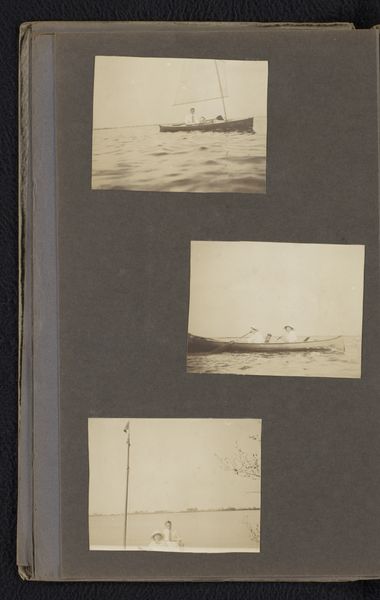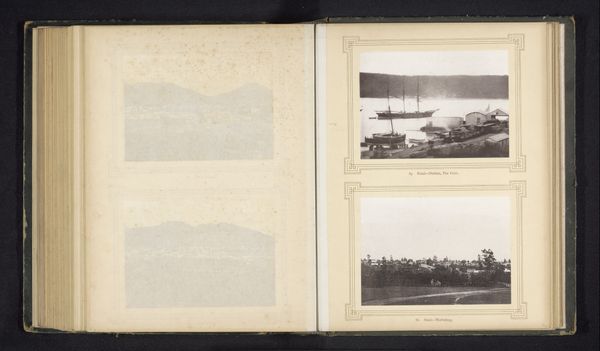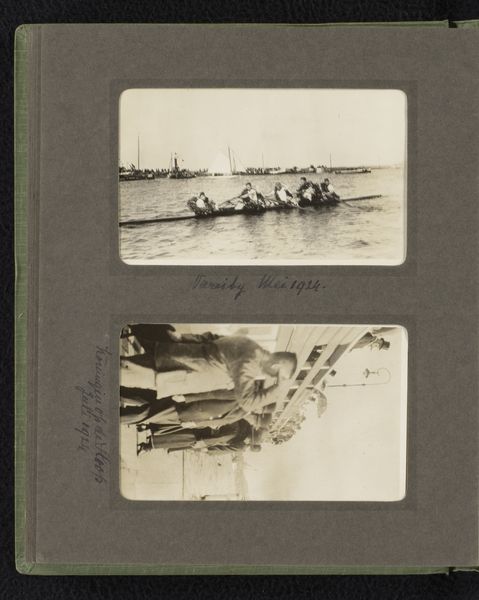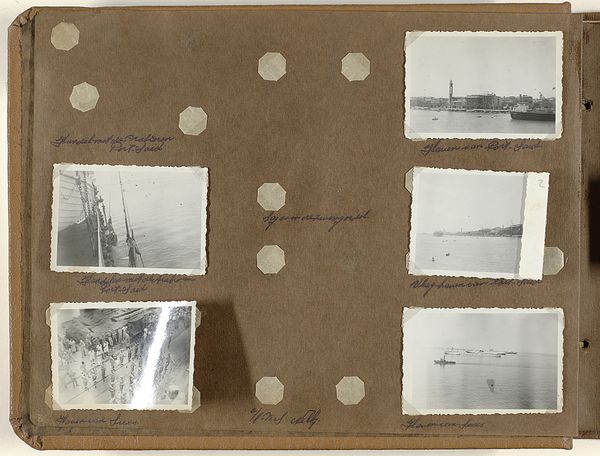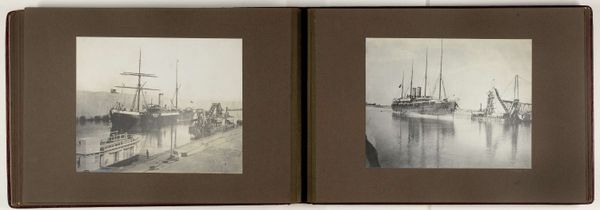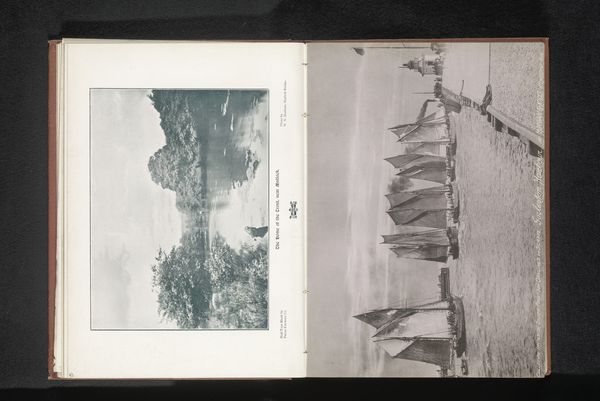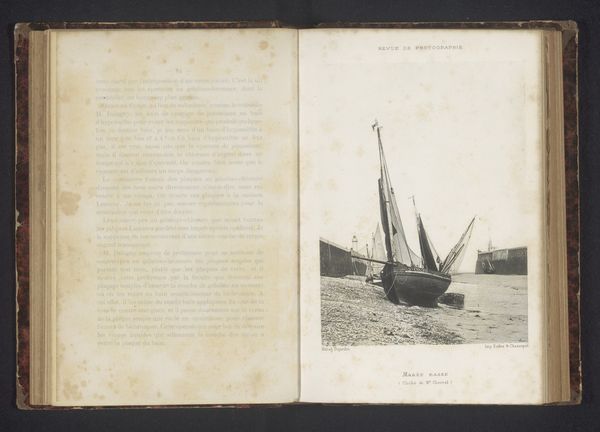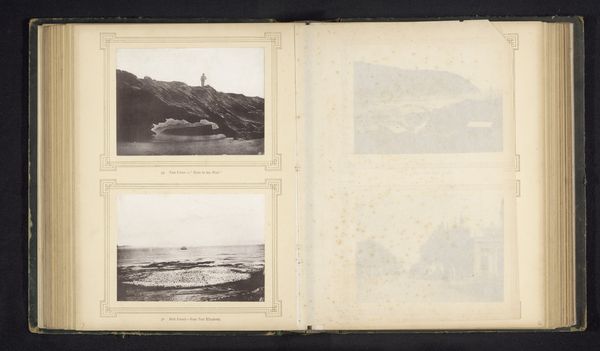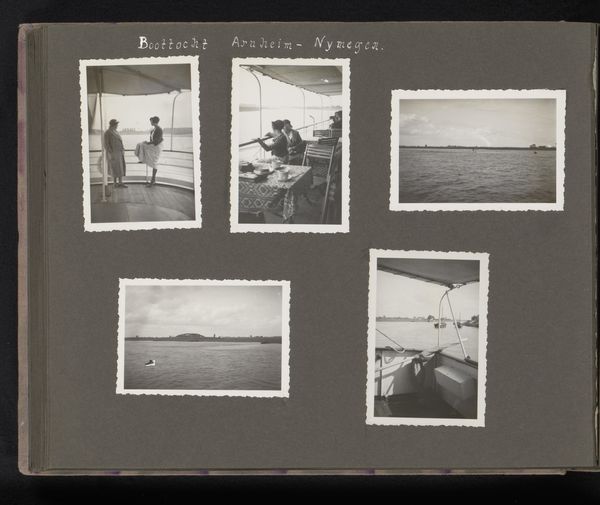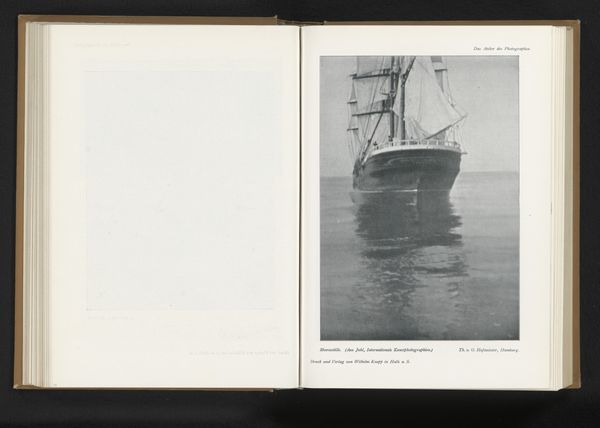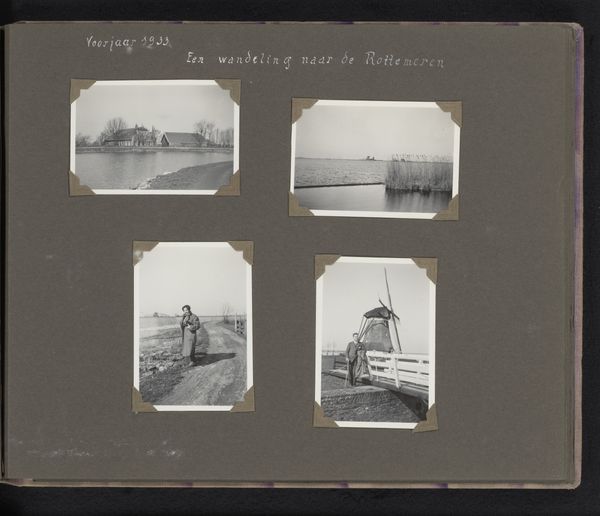
photography, gelatin-silver-print
#
sculpture
#
war
#
photography
#
gelatin-silver-print
#
paper medium
Dimensions: height 60 mm, width 90 mm, height 210 mm, width 260 mm
Copyright: Rijks Museum: Open Domain
Editor: Here we have a gelatin silver print from 1940-41, titled "Brand en een gezonken schip," which translates to "Fire and a Sunken Ship". It seems to depict scenes from wartime, and there’s a personal, scrapbook-like quality to the arrangement. How do you interpret this collection of images? Curator: This work speaks volumes about the construction of memory and identity in times of conflict. The juxtaposition of images—a burning oil tank, a military position, a sunken ship—presents a fragmented narrative, hinting at loss and aggression, but also the banality of everyday life for those involved. Do you notice the handwritten annotations? Editor: Yes, there are German phrases. One says "Vom 'Tommy' bombardierter Öltank!", and another says "versenkter Däne!". Curator: Exactly. These texts, coupled with the scrapbook format, suggest a specific perspective, perhaps a soldier's. Consider how this work, likely intended for a private audience, can be read as both a personal record and a form of propaganda, reflecting and reinforcing wartime sentiments. In what ways might the act of compiling and captioning these images have served a purpose beyond simple documentation? Editor: Perhaps it was a way to process the trauma of war, to create a personal narrative within a larger, chaotic event. The act of labeling, of assigning blame, feels like an attempt to regain control. Curator: Precisely. It's about agency and meaning-making amidst widespread violence. It also serves to other-ize the perceived enemy using language laden with propaganda. Reflect on the ethics of representation here – how does this personal archive contribute to broader understandings, and potentially, misunderstandings, of historical conflict? Editor: That's a powerful thought. I hadn’t considered the ethics of constructing such a narrative. This collection feels more complex and troubling now. Curator: Indeed. Art can serve as a critical lens through which we examine history's complicated truths and question its narratives.
Comments
No comments
Be the first to comment and join the conversation on the ultimate creative platform.
